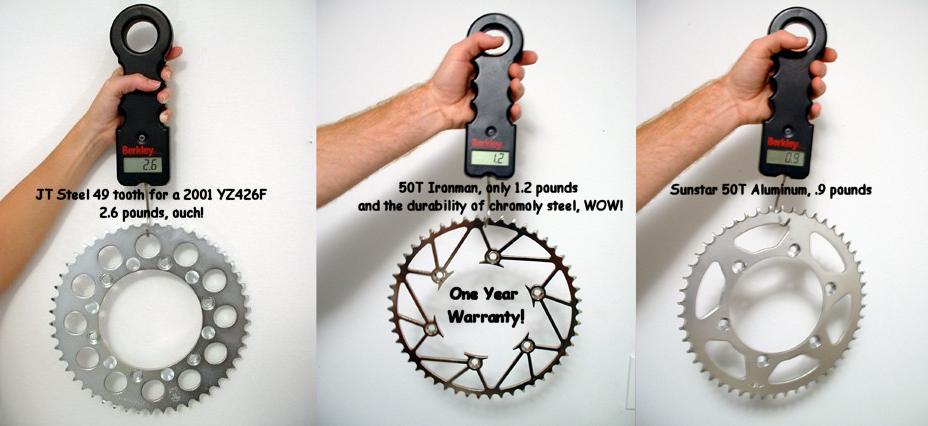Tinken
Husqvarna
Pro Class
i have one of these on my 310. light and strong. well worth the extra $$ i reckon.
They are light and strong. First they decrease the un-sprung weight in the rear, allowing your suspension to function better, especially when racing.

Secondly they are strong, outlasting several steel sprockets and will even outlast a Supersprox.
What kind of life can you expect from an Ironman Sprocket?
The following is very typical:
Below is a worn, but very usable rear Ironman sprocket. This sprocket is just at the .025" wear limit. This sprocket has been run for over 1000 hours on a 2002 and 2003 KTM 525. It required two bikes, five O-ring chains, and 31 Dunlop 695 rear tires to wear it out by an expert 220-pound desert/enduro racer who practices and/or races 10 hours per week.
This is typical wear in western desert and mountain conditions. Mud accelerates wear, but our sprockets will still outlast an aluminum Renthal in mud conditions, by 10 to 30 times. From experience, the 1000 hours in the below instance would have easily consumed 30 expensive aluminum sprockets. As most serious riders know, a powerful 450 eats sprockets at about the same rate as rear tires. 30 sprockets at $60 each is a whopping $1800. How much can you save per year with Ironman sprockets? It's probably not far from your yearly rear tire budget.

I think you should test sprocket sizes with aluminum sprockets, but when you find a ratio you like, this sprocket is the best choice. You will probably have moved on to your next bike before you wear out one of these.










